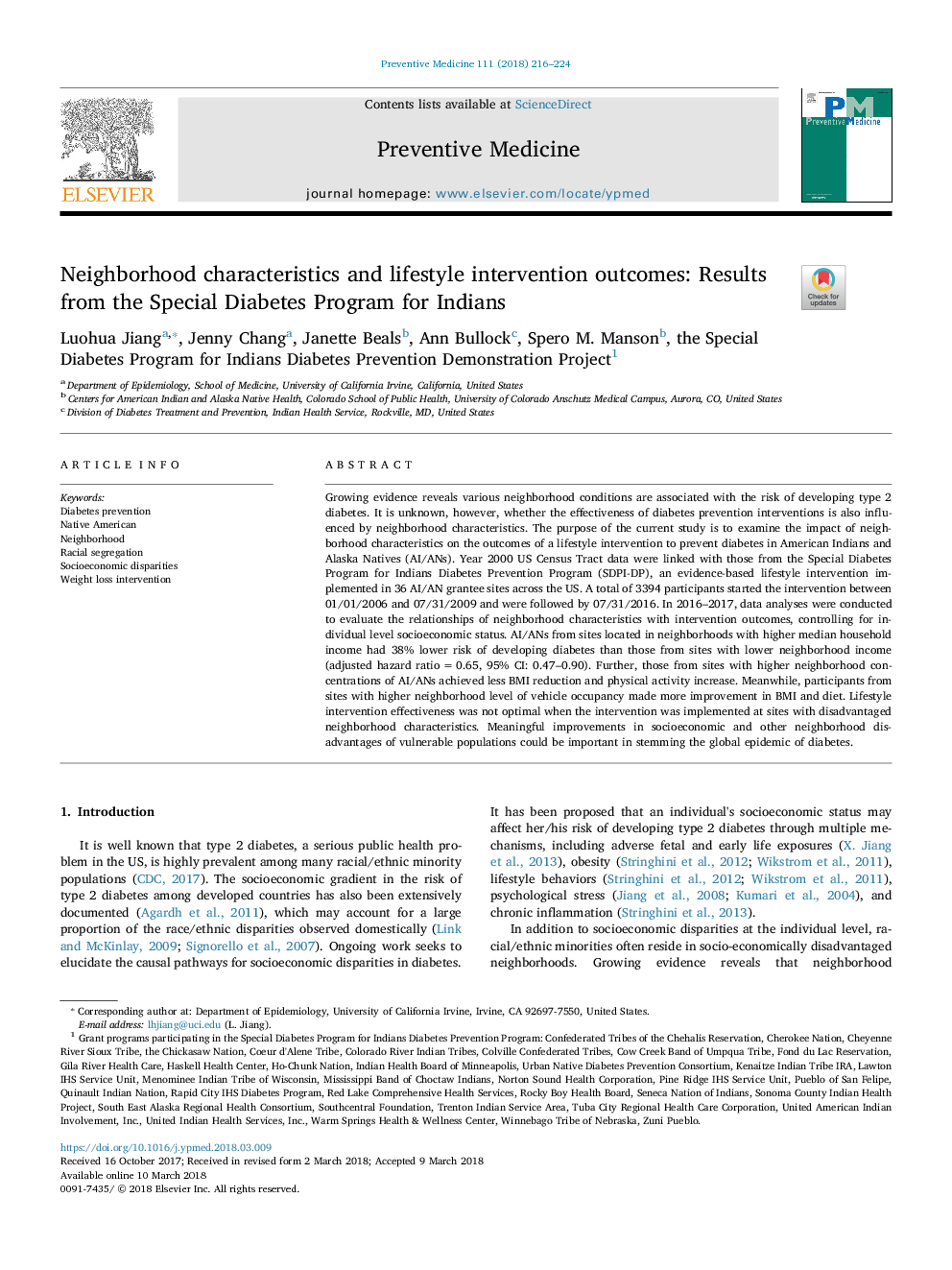ترجمه فارسی عنوان مقاله
خصوصیات محله و نتایج مداخله شیوه زندگی: نتایج برنامه دیابت ویژه برای سرخپوستان
عنوان انگلیسی
Neighborhood characteristics and lifestyle intervention outcomes: Results from the Special Diabetes Program for Indians
| کد مقاله | سال انتشار | تعداد صفحات مقاله انگلیسی |
|---|---|---|
| 134688 | 2018 | 9 صفحه PDF |
منبع

Publisher : Elsevier - Science Direct (الزویر - ساینس دایرکت)
Journal : Preventive Medicine, Volume 111, June 2018, Pages 216-224
ترجمه کلمات کلیدی
جلوگیری از دیابت، بومی آمریکا، محله تفکیک نژادی، تفاوت های اجتماعی و اقتصادی، کاهش وزن مداخله،
کلمات کلیدی انگلیسی
Diabetes prevention; Native American; Neighborhood; Racial segregation; Socioeconomic disparities; Weight loss intervention;

